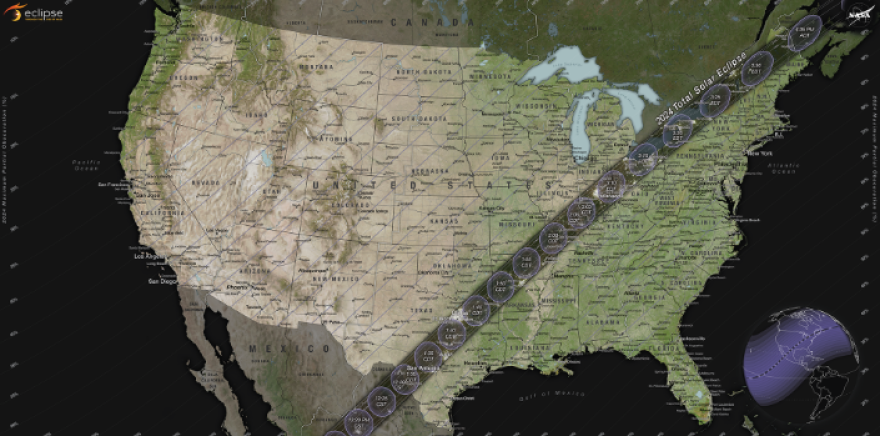A total solar eclipse will be visible across many states in the U.S. on Monday, April 8. The total eclipse is when the moon completely covers the sun, and will be visible in the path of totality which stretches from Texas to Maine.
If you live outside the path of totality, you will still have the chance to see a partial solar eclipse. This includes Idaho, where we will be able to see 27% to 43% obscurity depending on where you live in the state.
NASA is also hosting live coverage of the eclipse starting at 11 a.m. MT on Monday, so you will be able to watch the total solar eclipse online.
The moon may be blocking out the sun, but looking directly at the celestial event could cause permanent damage to your retinas and potentially cause blindness called solar retinopathy.
Here are a few ways you can experience the eclipse while keeping your eyes safe:
- Eclipse glasses and solar hand viewers: Buying and using eclipse viewers is a great way to watch. You can buy them at any number of online outlets, but you want to make sure that they meet the international safety standard of ISO 12312-2. During that 2017 solar eclipse in the United States, there were many counterfeit glasses, so buy them from a reputable place, like the viewers suggested by the American Astronomical Society. If you have a pair from a previous eclipse make sure they’re not bent or scratched and you can do a test with indoor lights, like in this NASA video.
- Pinhole camera: You can build a simple pinhole camera with a shoe box or cereal box, some aluminum foil, a sheet of paper, scotch tape, scissors and a pencil. You won’t use this to directly look at the eclipse, but you’ll be able to see crescents that show how the moon is blocking the sun. This NASA video walks you through the process.
 NASA
NASAPinhole cameras are easy to make and are a safe way to watch the annular eclipse - Tree shadows and colanders: Maybe you didn’t have time to buy glasses or make a pinhole camera and that’s okay. There are other ways to indirectly observe the eclipse without any equipment. If you look at a tree shadow on any day, you’ll see a bunch of circles projected on the ground or surface; those disks are projections of the sun. When the sun is blocked those circles become crescents. You can also use a piece of paper poked with small holes, a colander or any other object with holes in it.
 Joy Ng/NASA
Joy Ng/NASAA steamer basket or any object with small holes can act like a pinhole camera during an eclipse - Yes, there’s an app for that: There are a bunch of apps out there that will help you figure out what times the eclipse will be visible in your location, walk you through understanding the different types of eclipses or walk you through photographing it with a filter kit. Download a few in advance and figure out which one will guide you best through the event.
You can also check out the interactive solar eclipse map from NASA to see exactly when and where the total solar eclipse will be.




